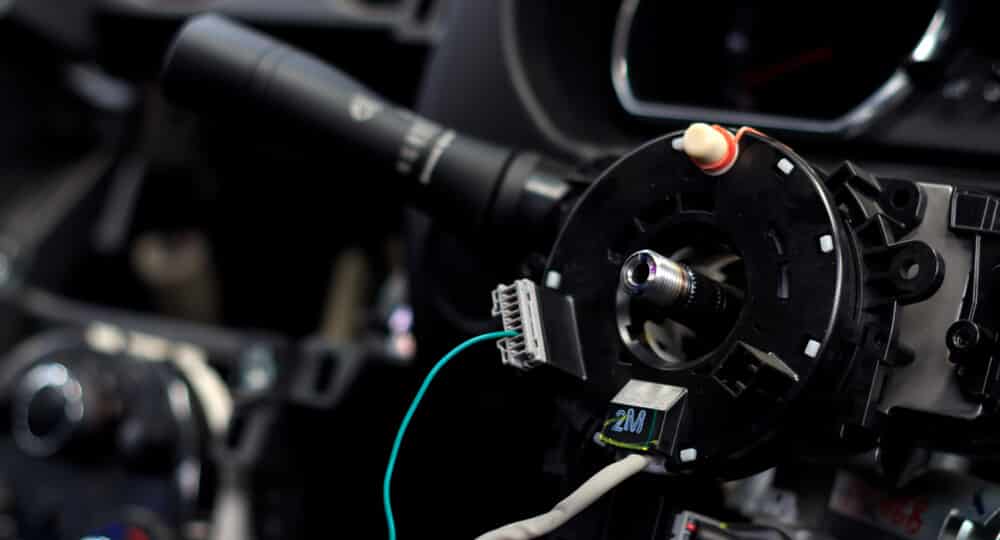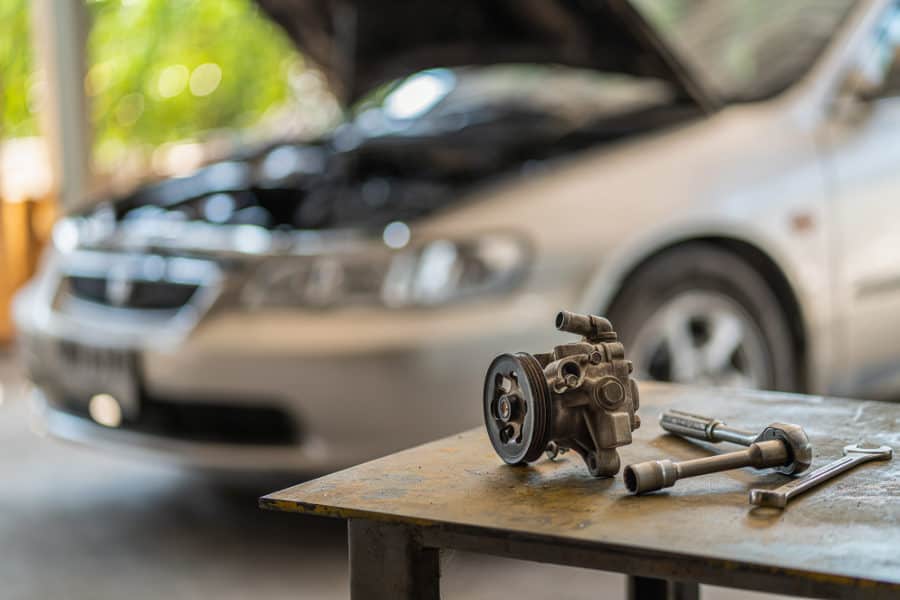Don’t Let a Power Steering Assist Fault Leave You Stranded: Tips for Prevention and Repair
Power steering systems are an essential component of modern vehicles, providing drivers with the ability to easily maneuver and control their vehicles. These systems use hydraulic or electric power to assist in steering, making it easier for drivers to turn the wheels. Without power steering, turning the wheels would require a significant amount of physical effort, especially at low speeds or when parking.
Understanding Power Steering Assist Faults: Causes and Symptoms
Power steering assist faults occur when there is a problem with the power steering system that affects its ability to provide assistance to the driver. These faults can be caused by a variety of factors, including low power steering fluid levels, a malfunctioning power steering pump, or a leak in the system.
One common symptom of a power steering assist fault is difficulty in turning the steering wheel. The wheel may feel stiff or unresponsive, requiring the driver to use more force to turn it. Another symptom is a whining or groaning noise coming from the power steering pump when the wheel is turned. This noise is often an indication that the pump is not functioning properly. Additionally, a power steering assist fault may cause the vehicle to pull to one side while driving, making it difficult to keep the vehicle in a straight line.
Common Signs of a Failing Power Steering System
A failing power steering system can have a significant impact on vehicle performance and safety. One common sign of a failing power steering system is a noticeable increase in steering effort. The driver may find it difficult to turn the wheel, especially at low speeds or when parking. This can make it more challenging to navigate tight spaces and can increase the risk of accidents.
Another sign of a failing power steering system is fluid leakage. If there is a leak in the power steering system, fluid may accumulate under the vehicle or on the ground where it is parked. This can lead to a loss of power steering fluid, which can cause the system to fail completely. In addition to fluid leakage, a failing power steering system may also produce unusual noises, such as squealing or grinding sounds when the wheel is turned.
The Importance of Regular Power Steering Maintenance

Regular power steering maintenance is crucial for ensuring the longevity and optimal performance of the system. By regularly inspecting and maintaining the power steering system, drivers can identify and address any potential issues before they become major problems.
One important component of power steering maintenance is checking and maintaining proper fluid levels. Power steering fluid lubricates and cools the system, so it is essential to ensure that there is enough fluid in the reservoir. Additionally, power steering fluid can become contaminated over time, so it is important to flush and replace the fluid periodically.
Another important aspect of power steering maintenance is inspecting and replacing worn or damaged components. Over time, components such as belts, hoses, and seals can wear out or become damaged, leading to leaks or reduced performance. Regular inspections can help identify these issues early on and prevent further damage to the system.
How to Check Power Steering Fluid Levels and Quality
Checking power steering fluid levels and quality is a relatively simple process that can be done by most vehicle owners. To check the fluid levels, start by locating the power steering fluid reservoir under the hood of the vehicle. The reservoir is typically labeled and can usually be found near the engine or firewall.
Once you have located the reservoir, remove the cap and use a dipstick or the markings on the side of the reservoir to check the fluid level. The fluid should be between the minimum and maximum marks on the dipstick or reservoir.
In addition to checking fluid levels, it is also important to inspect the quality of the power steering fluid. Healthy power steering fluid should be a clear or light amber color. If the fluid appears dark or has a burnt smell, it may be contaminated and should be replaced.
DIY Power Steering Repairs: Tips and Tricks
While some power steering repairs may require the expertise of a professional, there are several repairs that can be done at home by experienced DIYers. One common DIY power steering repair is replacing a worn or damaged power steering belt. To replace the belt, start by locating the tensioner pulley and using a wrench to release tension on the belt. Once the tension is released, remove the old belt and install a new one, making sure it is properly aligned with the pulleys.
Another common DIY power steering repair is replacing a leaking power steering hose. To replace the hose, start by locating the leaking hose and using a wrench to loosen and remove the fittings at each end. Once the fittings are removed, install a new hose and tighten the fittings securely.
When performing DIY power steering repairs, it is important to follow all safety precautions and use the proper tools and equipment. If you are unsure about any aspect of the repair, it is best to consult a professional.
When to Seek Professional Power Steering Repair Services
While some power steering repairs can be done at home, there are certain situations where it is best to seek professional repair services. If you are experiencing significant power steering issues, such as a complete loss of power steering assist or a major fluid leak, it is important to have your vehicle inspected by a professional as soon as possible.
Additionally, if you are unsure about how to perform a specific power steering repair or do not have the necessary tools or equipment, it is best to leave the repair to a professional. Attempting complex repairs without the proper knowledge or tools can lead to further damage to the system or even personal injury.
Professional power steering repair services have the expertise and experience to diagnose and repair complex power steering issues. They also have access to specialized tools and equipment that may not be readily available to DIYers.
Power Steering Replacement: Factors to Consider
In some cases, power steering replacement may be necessary if the system is beyond repair or if an upgrade is desired. When considering power steering replacement, there are several factors to take into account.
One factor to consider is the type of power steering system that is currently installed in the vehicle. There are two main types of power steering systems: hydraulic and electric. Hydraulic power steering systems use hydraulic fluid and a pump to provide assistance, while electric power steering systems use an electric motor. The type of system will determine the type of replacement that is needed.
Another factor to consider is the compatibility of the replacement system with the vehicle. Power steering systems are designed to fit specific makes and models of vehicles, so it is important to choose a replacement system that is compatible with your vehicle.
Cost is also an important factor to consider when choosing a power steering replacement. The cost of a replacement system can vary depending on the type of system and the brand. It is important to research and compare prices to ensure that you are getting the best value for your money.
Upgrading Your Power Steering System for Better Performance
Upgrading your power steering system can improve vehicle performance and handling, especially if you have an older vehicle with a hydraulic power steering system. One popular upgrade option is converting from a hydraulic power steering system to an electric power steering system.
Electric power steering systems offer several advantages over hydraulic systems, including improved fuel efficiency, reduced maintenance requirements, and more precise control. Electric power steering systems also eliminate the need for a power steering pump, which can free up space under the hood and reduce weight.
When considering an upgrade, it is important to research and choose a reputable brand that offers high-quality components. It is also important to ensure that the upgrade is compatible with your vehicle and that it can be installed safely and effectively.
Preventing Power Steering Failures: Best Practices
Preventing power steering failures starts with regular maintenance and safe driving habits. By following best practices, drivers can reduce the risk of power steering issues and ensure the longevity of their power steering systems.
One best practice is to regularly check power steering fluid levels and quality. As mentioned earlier, power steering fluid plays a crucial role in lubricating and cooling the system, so it is important to ensure that there is enough fluid in the reservoir and that it is in good condition. Regularly inspecting and replacing worn or damaged components is also important for preventing power steering failures.
Safe driving habits can also help prevent power steering issues. Avoiding rough or aggressive driving can reduce the strain on the power steering system and prevent premature wear. Additionally, avoiding driving through deep water or off-road conditions can help prevent damage to the power steering system.
The Cost of Ignoring Power Steering Issues: Risks and Consequences

Ignoring power steering issues can have serious consequences for both vehicle performance and safety. One major risk of ignoring power steering issues is a loss of control while driving. If the power steering system fails completely, it can become extremely difficult to steer the vehicle, especially at higher speeds or in emergency situations. This can increase the risk of accidents and injuries.
Ignoring power steering issues can also lead to further damage to the system. For example, if a minor fluid leak is ignored, it can progress into a major leak that causes a loss of power steering fluid. This can lead to a complete failure of the power steering system and require more extensive repairs or even a full replacement.
In addition to the risks and consequences mentioned above, ignoring power steering issues can also result in higher repair costs in the long run. By addressing issues early on, drivers can prevent further damage to the system and avoid more expensive repairs down the line.
Conclusion
Power steering systems are an essential component of modern vehicles, providing drivers with the ability to easily maneuver and control their vehicles. Regular maintenance and repairs are crucial for ensuring the longevity and optimal performance of power steering systems. By following best practices and addressing issues early on, drivers can prevent power steering failures and ensure the safety and reliability of their vehicles.
